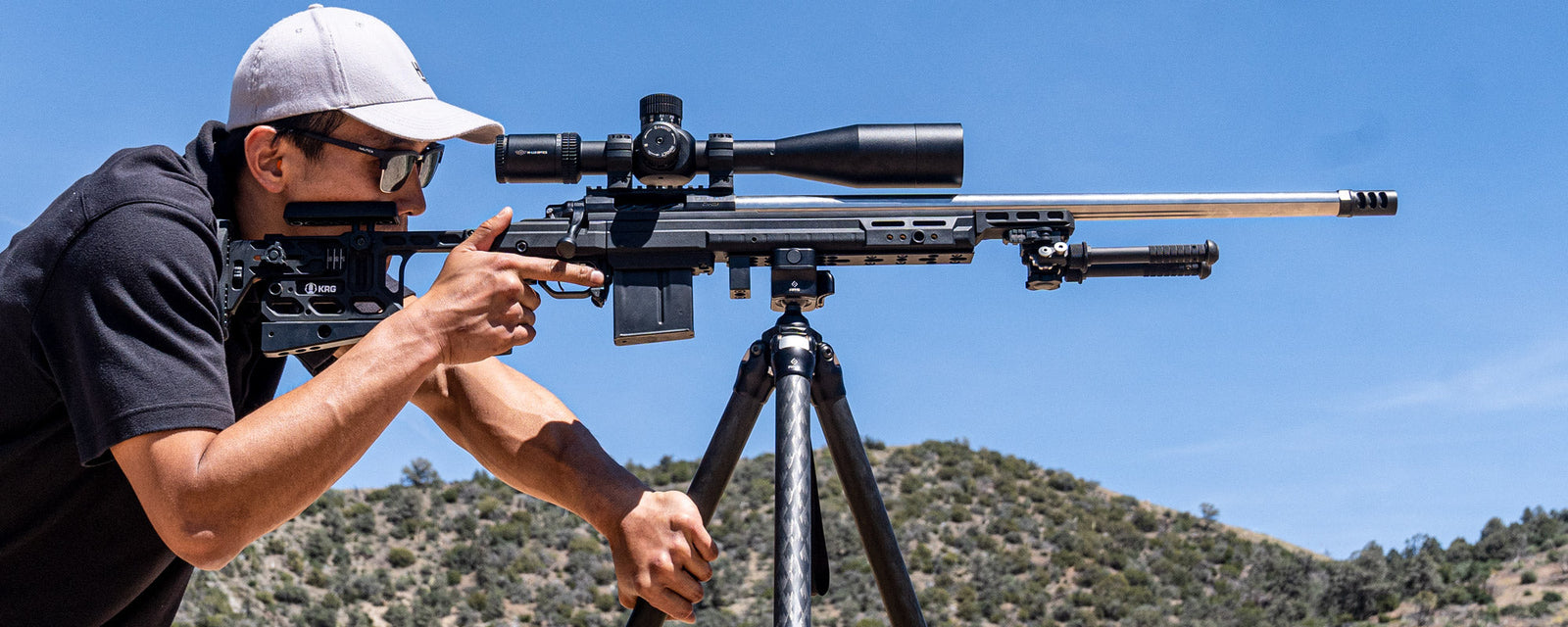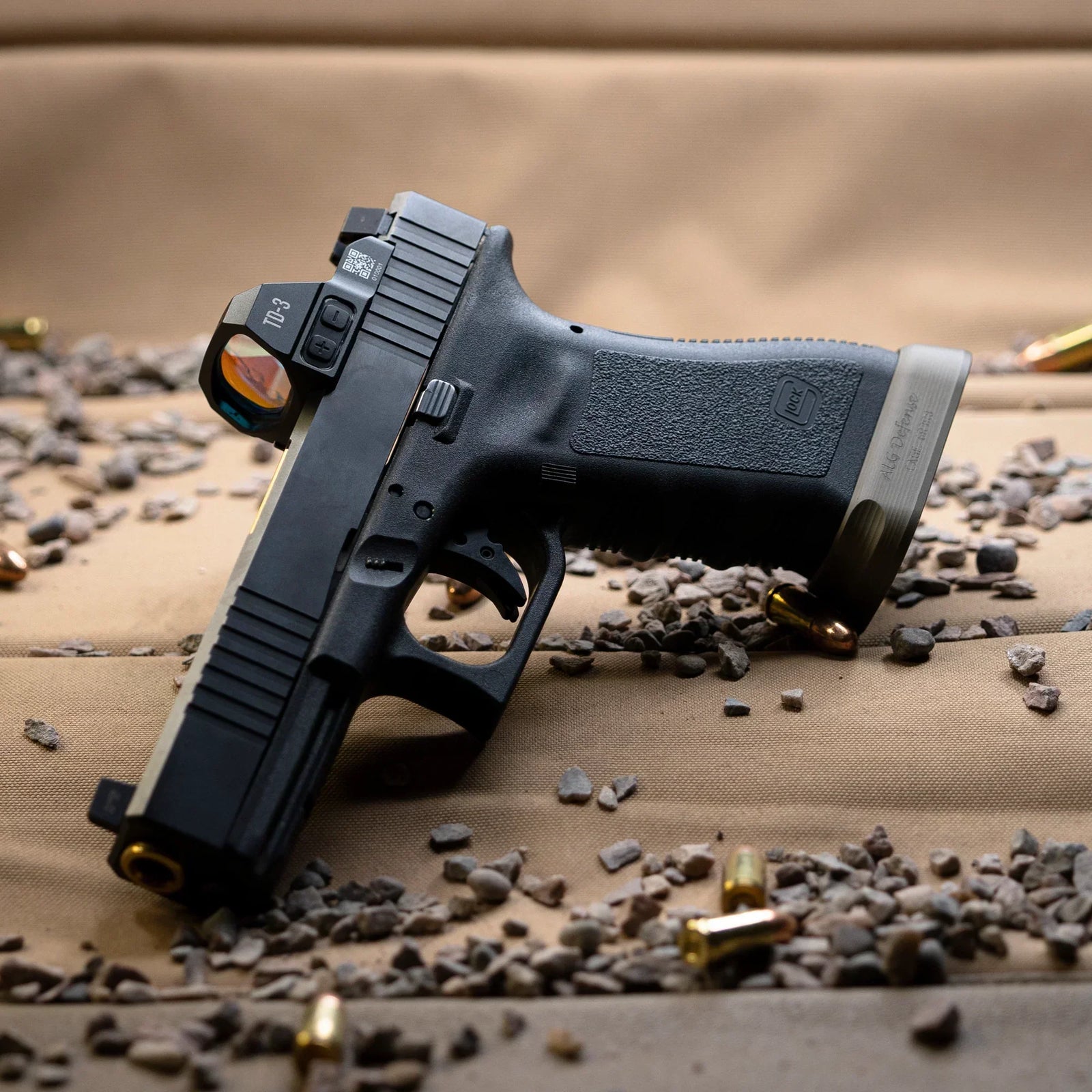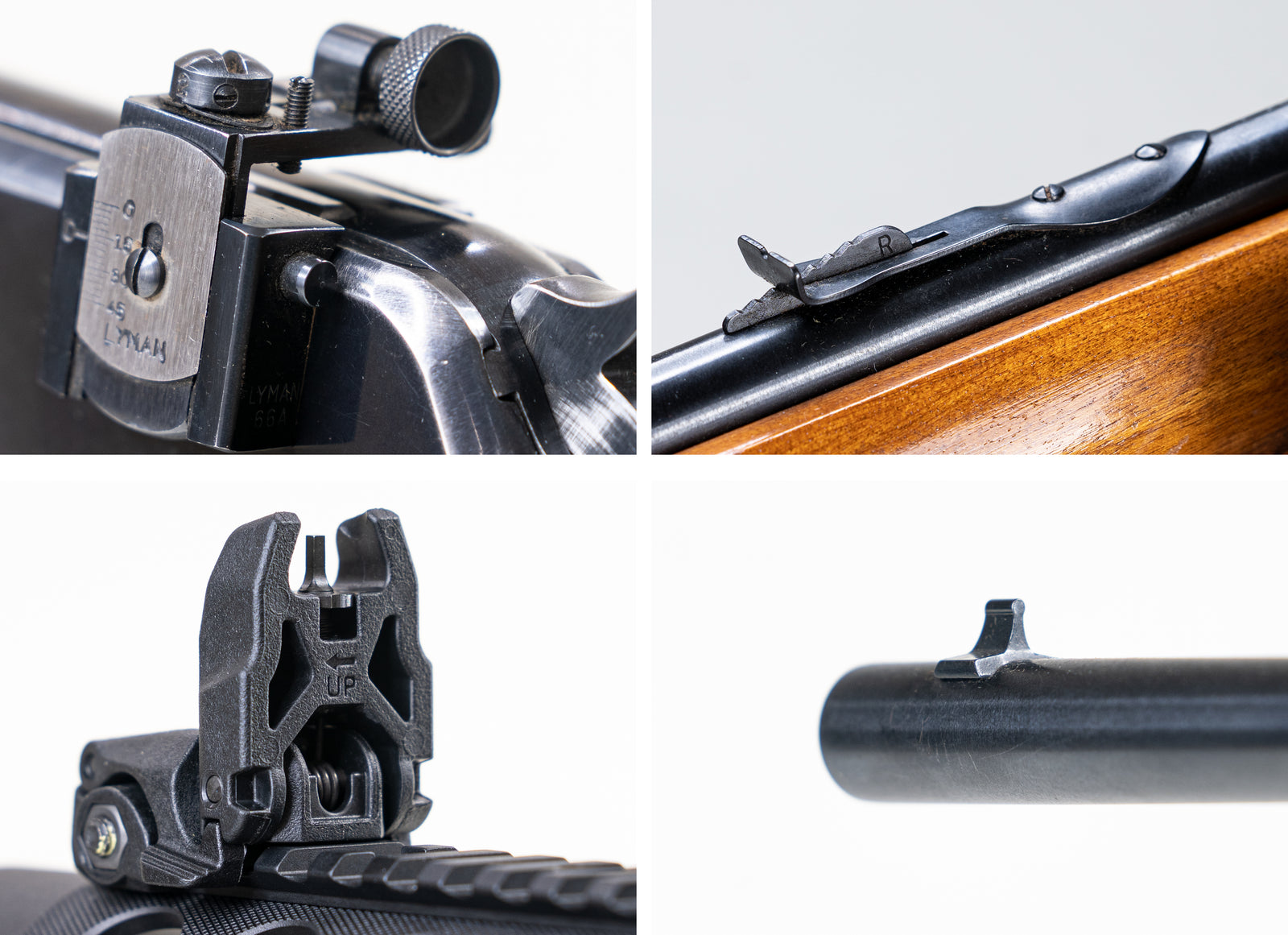Powder is the stuff that really sends the bullet flying. Once the primer sets off the reaction, powder burns. As the powder burns, the pressure and temperature in the chamber and the barrel skyrocket. The rising temperature and pressure cause more powder to burn, speeding up the process until it completes. Unburnt powder follows the bullet through the barrel, racing along with a wave of pressure.
By the time the bullet exits the barrel, a complete reaction should burn all the powder in a barrel of appropriate length. A barrel that is too short won’t have enough length (and thus, time) for all the powder to burn - robbing you of velocity and power. If the barrel is too long, and the powder finishes burning well before the bullet exits, it will cause the bullet to lose speed to friction at the end of the barrel.
The amount of powder is measured in grains, a unit of weight.

Powder being measured before being poured into the case. To the left, empty cases and a powder funnel.
In this delicate balance of barrel length and burn rate, you can play with a few factors.
The overall amount of powder in the case will determine the potential amount of force. However much powder you’re using will need to fit in the case behind the bullet, so there is a maximum limit on volume. Beyond that, the amount of powder you’re using shouldn’t generate too much pressure in the chamber, or else it will rupture explosively. Your barrel or rifle manufacturer will have some note of the maximum safe pressure, often in p.s.i. - pounds per square inch. Either the case volume or maximum pressure will determine the maximum amount of powder, whichever is lower.
The pressure generated by each type of powder can vary, depending on its composition, compression, and room to burn. If you’re handloading rounds, these values will be very important for determining the safe upper bounds for powder. If you’re buying preloaded cartridges, you’ll just need to keep an eye on your barrel’s safe limit to keep away from similar-looking rounds that are not intended for your rifle. At a quick glance, always be wary of rounds marked “ +P”, as these are rounds of higher than standard pressure.
There’s also a minimum amount of powder needed to push your bullet out of the barrel. It’s incredibly unlikely that you’ll be able to commercially buy a cartridge with too little powder. In the event that the bullet doesn’t exit the barrel (a squib), you’ll need to clear your barrel before you fire again, or else risk the rifle rupturing on the next shot.
The overall amount of powder needed to achieve a certain velocity will vary depending on the type of powder - and there’s a lot of variety! Some powders are lighter or heavier based on their chemical mix, and some have larger or smaller grains that pack their weight into a different amount of volume. Different mixtures will have a different burn rate, affecting chamber pressure and bullet acceleration.
Most of these factors come into play only when handloading. If you’re buying pre-made cartridges, finding the optimum cartridge to maximize your rifle’s accuracy is half the fun, regardless of what goes in it. To prepare for future reloading, do some research into the cartridges you’ve used; find out about the bullet, its specific weight, size, composition, and ballistic coefficient. Find out how much powder is behind it, and (if possible) the type of powder. All these notes will help you going forward as you solve the question of, “ which cartridge is best for my rifle?”

A variety of powders. Different grain sizes, shapes, and chemical mixes will contribute to different burn rates. The type and amount of powder will change the overall pressure.
Powder has come a long way in the past couple hundred years. It’s not entirely clear when black powder was first invented, but by the 13th century China was using it in guns, fireworks, and a sort of shrapnel/flamethrower.
For centuries, black powder dominated the field as the best and sometimes only option for propellants. We’ll gloss over early compressed-air rifles. It was largely a mix of three key ingredients: potassium nitrate, charcoal, and sulfur. This mixture burns quite quickly, and boy does that barrel get hot!
Early in its use, this mix was known as serpentine powder. It was relatively dangerous to handle, and the components would sometimes separate during shipment. The powder would have to be re-mixed prior to use.
Eventually, corning (granulation) was invented. Water was added during the mixing process, both cutting down on potential explosions and maintaining a uniformity in the mixture. The powder didn’t separate during shipment, so it was more reliable. Not long after corning, powder also started being compressed. After the initial powder milling, the moist powder was squished between plates. This removed air pockets and increased the specific gravity of the powder. The performance of the powders improved even more.
And right about when black powder was at the height of its development, smokeless powder went and changed the game. The development of smokeless powder provided a major change to almost every aspect of warfare, not the least of which was the lack of smoke. Firing volleys of black powder would cover the field in a thick smoke, providing camouflage and concealment to both sides. Through the thick smoke and sounds of gunfire, it was sometimes nigh impossible to tell where troops were and what the latest command might be. With smokeless powder, this very literal ‘fog of war’ wasn’t an issue.
Smokeless powder was first created by accident. A Swiss scientist, Christian Schonbein, spilled some chemicals in the course of an experiment. As he was in the kitchen at the time, he wiped up the spill with his wife’s apron and hung it over the stove to dry. It dried so well that the resulting ignition left behind almost no ash. Fast forward 40 years, and the Lebel Model 1886 rifle was the first to use “Poudre B,” a secret French smokeless mixture. The secret inevitably didn’t last long. By 1888, Alfred Nobel was improving on the mixture with nitroglycerine. By 1891, this “ballistite” mixture was patented in the U.S. The German navy began using ballistite by 1898, and before too long so did the Italians and Russians.
Smokeless powder had a few other advantages over black powder, beyond the smokeless-ness. Less fouling and residue meant the barrel stayed cleaner, longer. The weight of the powder was considerably lower. The heat generated was also lower, reducing barrel wear and keeping the gun overall cooler.
Generally speaking, there’s no reason to use black powder in precision riflery. Smokeless powder provides a more consistent burn and is less able to foul up the barrel.
That being said, firing a lever action Winchester 1873 with .44-40 black powder ammo is simply a delight. You decide.






Leave a comment (all fields required)